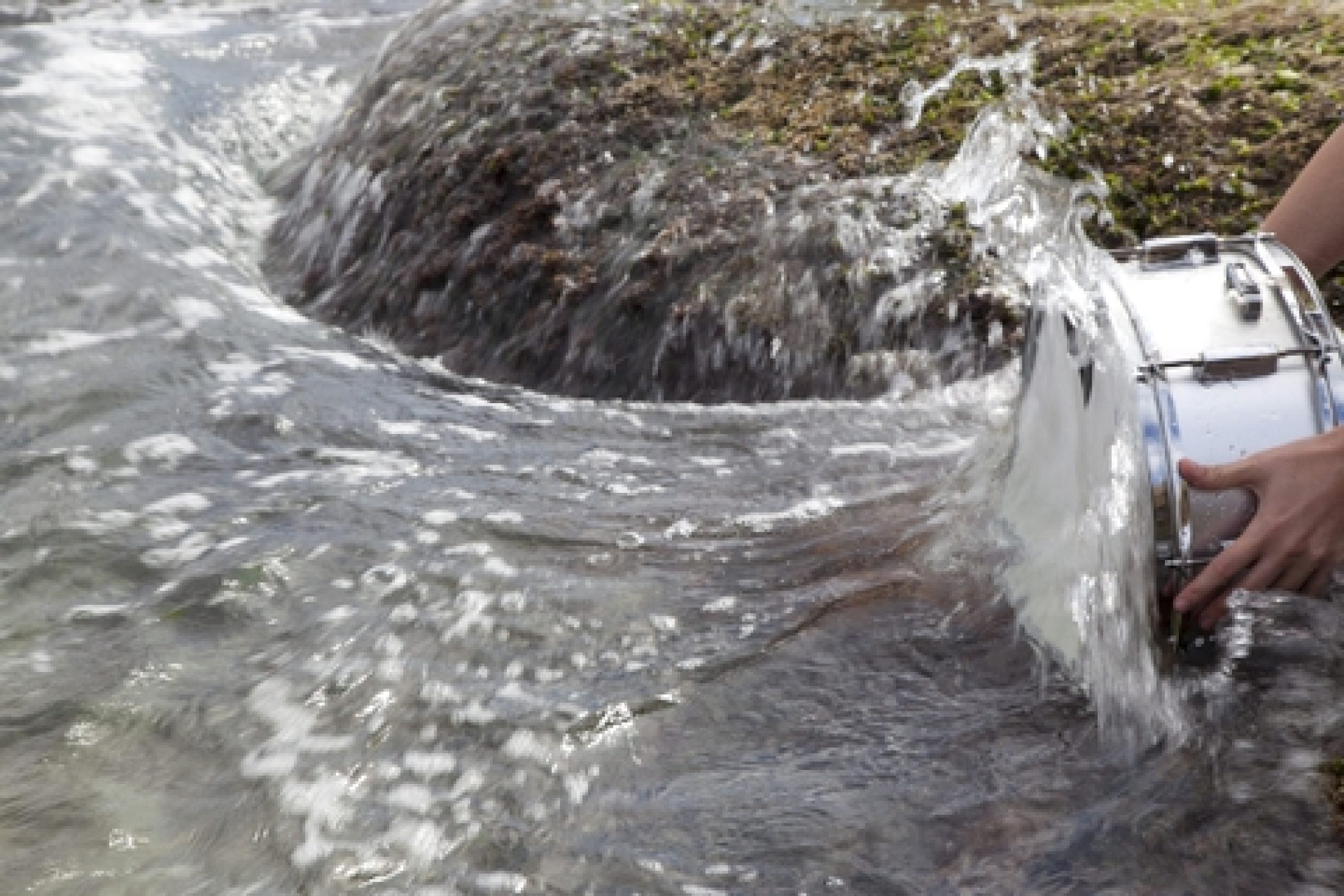Lauren Brincat
Shoot From the Hip
28th March – 21st April 2012
Anna Schwartz Gallery Carriageworks
REPETITION AND RITUAL
Lauren Brincat’s practice seeks to reconcile the artist’s past with the ever changing present through ritual and repetitive action…based on “memory and a nostalgia for a past that is personal.”[1] In its broadest sense, Brincat’s practice is an ongoing inquiry into the self.
The exhibition ‘Shoot From The Hip’ – the artist’s first solo project with Anna Schwartz Gallery – continues this investigation, building upon the practice with new works in video and sculpture.
Brincat’s videos are documents of performances. The actions are simple, either repetitive or teleological. Repetitive actions are based in childhood memories and imbued with ritual; personal snapshots of another life brought forth into the present as they change form. Memory is choreographed into movement: Egyptian Camomile (2012), recalls a home remedy for blocked tear ducts and a mother’s care; Carciofo Arcimboldo (2012) revives the children’s game of ‘he loves me, he loves me not,’ while alluding to the still-life painter famous for using food to create portraits. References to art’s history are redolent throughout the work.
The video Steady As She Goes (2012) is a survey of the surrounding environment – not only visually, but also through sound. While reminiscent of Mike Parr’s experimental video, Pushing a video camera over a hill (1971), this is less an action with camera than an experiment in painting with video. The frame is fixed and the lone figure centered, alluding to Romantic landscape painting. The camera is behind the subject, forcing us to see what she sees in a game of ‘double-looking’. However, Brincat intelligently updates this tradition of ‘double-looking’ with the incorporation of a soundtrack. In a method not dissimilar to a painted figure’s gaze outside of the frame, the soundtrack draws our attention to the unseeable world surrounding the picture. She builds upon the history of her own work, as this video becomes a book-end to the earlier It’s A Long Way To The Top (2009) in which the artist walks a bass drum to the top of a grassy hill, only to let it roll down toward the fixed camera, until it passes out of frame.
Brincat often uses inanimate objects as extensions of herself. Many of the earlier works utilised drum kits for this purpose and, after a brief interlude, the artist reunites with her former self in the form of the snare drum in Snare the Sea. As water gushes, its beat rhymes with the drum as it makes music of its own. This work forms part of the greater narrative of this exhibition; a musing on the sea.
ACCIDENT
In ‘Shoot From The Hip’, an array of seemingly disconnected or disparate objects and symbols are woven together into a narrative evoking a sea journey. The artist cites Bas Jan Ader as a key influence and in particular his infamous In Search of the Miraculous (1975). The project was to be Ader’s three-part conceptual art work – comprising a series of photographs documenting a night time walk undertaken by the artist from the Hollywood Hills of Los Angeles down to the Pacific Ocean, an Atlantic crossing in a one-man yacht from the United States to Europe, followed by a walk through Amsterdam at night to echo the Los Angeles action. However, during the Atlantic crossing, the artist met his death and the work was never completed.
Paul Virilio’s theory of the ‘accident’ (or failure) is based on the idea that ‘accidents’ are implicit in the invention of any form of industry or technology. He asks the question; does our desire for progress need to primarily consider the potential accident that will inevitably occur with each technological advancement? For Virilio, the airplane crash begets the airplane, the shipwreck begets the ship – the accident is therefore inevitable/implicit. If we consider Ader’s project in this light, we can make a direct link to Virilio’s theory. There have been numerous speculations about the artist’s death in relation to this work, primarily because of its poetic meaning in a work described as Romantic. Within this reading of the work, it is also possible to consider the tragic ending – or ‘accident’ – as a predetermined failure, as something inevitable, even implicit in the work. In this sense, Ader’s work achieves its purpose most fully through his own death. His death was an accident (failure) but at the same time fulfilled his intention.
To ‘shoot from the hip’ is to make a decision or execute an action on the spur of the moment; to shoot without taking aim. But Brincat’s project exhibits greater precision. While the works may appear to be casual, accidental, they are in fact strategic. Brincat aims as much with her body as with her eyes.
The work Southeasterlies to the Doldrums (2012) is a large sail covered in cassette-tape ‘tell-tales’ (pieces of cloth or other material attached to a boat to determine wind direction). These tell-tales come from over 100 ‘mix-tapes’ – collections of songs carefully curated to create individual narratives. Rather than one or two tell-tales, there are thousands. If the captain of this hypothetical boat looked to these tell tales for direction, the boat would inevitably perform an erratic dance – just as a body would erratically dance to the thousands of songs on the mix-tapes, and as the artist’s hair dances in the video Sway (2012). The boat would be lost, or perhaps simply enjoy this moment of unstructured improvisation. Whereas the southeasterly winds are strong and bring change; the doldrums experience no wind. It is a calm that creates a mirror-like quality on the surface of the water that traps a sail-driven boat for days or weeks. The sail is representation of the artist and it takes us further into the journey of her development.
PYRAMID
Works in ‘Shoot From The Hip’ are connected to the natural environment and through the use of the pyramid as a symbol – together with the landscape and the sea – there is a sort of implicit spiritualism. The work Doldrums (2012) is a pyramid mirror. Appropriated from a painting by Hilma af Klimt, this work is yet another stand-in for the artist… caught in a stalemate… paused in reflection. The pyramid as a form signals strength. In architecture the pyramid offers stability, aesthetically and structurally – and for believers of Pyramid Power it possesses supernatural potential. The work Doldrums is the connective thread between all of Brincat’s works in this exhibition; the maturation of the artist, the embracement of her womanhood, her strength and creative force. Brincat excavates the past through performative rituals documented in video, in order to achieve an ambivalent reflection through the image of the doldrums. She navigates herself through a relationship with the natural world, art, and musings on romantic narratives of the sea.
Dressing Down (2012), documenting the artist repeatedly removing the shirt from her back, demonstrates that she has bared all. This video, then, is a reduction that describes the complexity of all that we have seen. In the assemblage Brincat offers in ‘Shoot From The Hip’ there are no accidents – just spaces for quiet contemplation.
Tania Doropoulos, 2012.
[1] From email correspondence with the artist, 13 March 2012.
Images
Lauren Brincat
SHOOT FROM THE HIP, 2012
installation view, Anna Schwartz Gallery, Carriageworks
Lauren Brincat
SHOOT FROM THE HIP, 2012
installation view, Anna Schwartz Gallery, Carriageworks
Lauren Brincat
SHOOT FROM THE HIP, 2012
Installation view, Anna Schwartz Gallery, Carriageworks
Lauren Brincat
SHOOT FROM THE HIP, 2012
Installation view, Anna Schwartz Gallery, Carriageworks
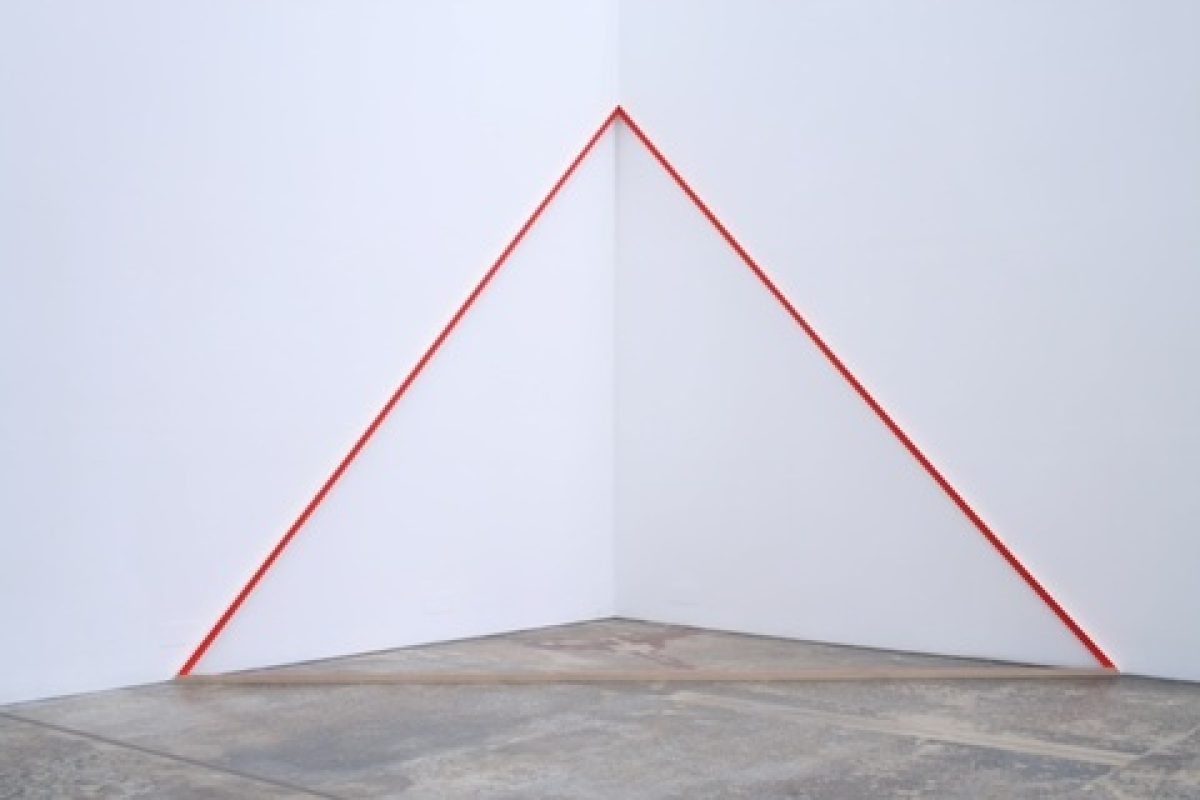
Lauren Brincat
Your Move, 2012
timber, vinyl paint
433 x 500 x 5 cm
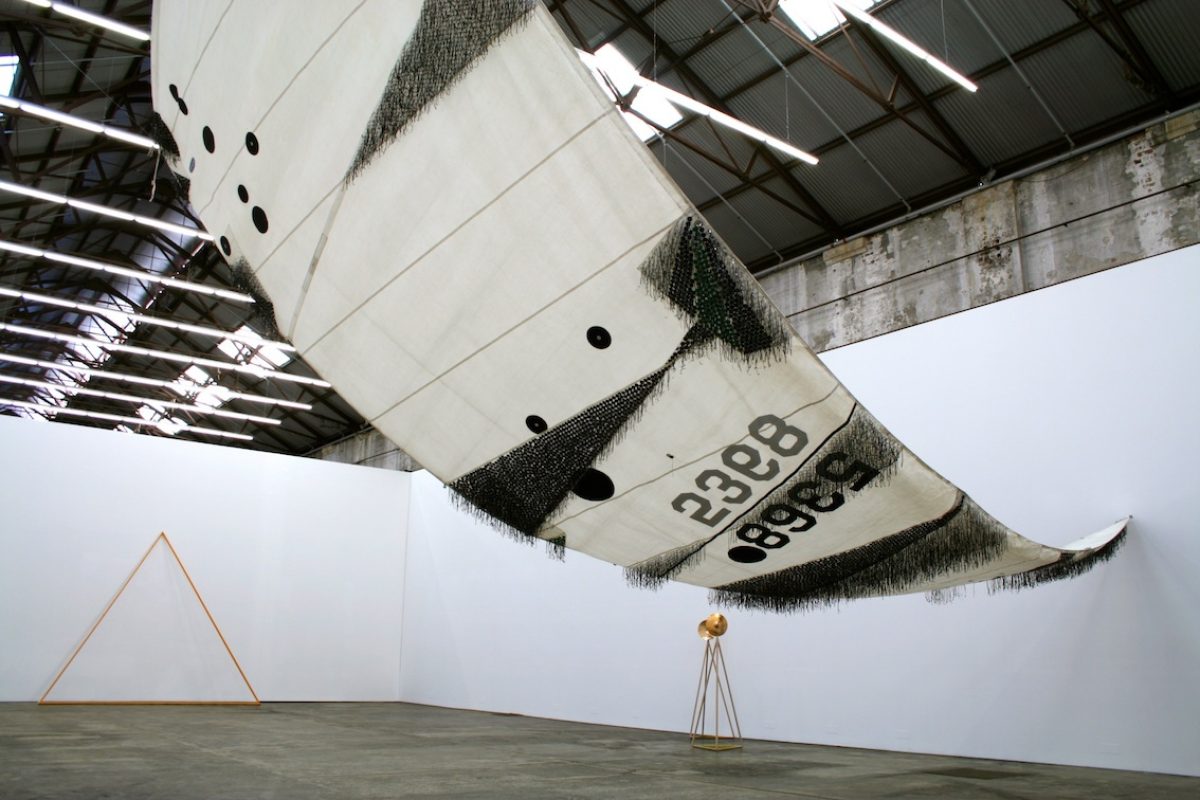
Lauren Brincat
Southeasterlies to the Doldrums, 2012
Nautical sail, adhesive nautical fabric, cassette tape
1400 x 600 x 15 cm
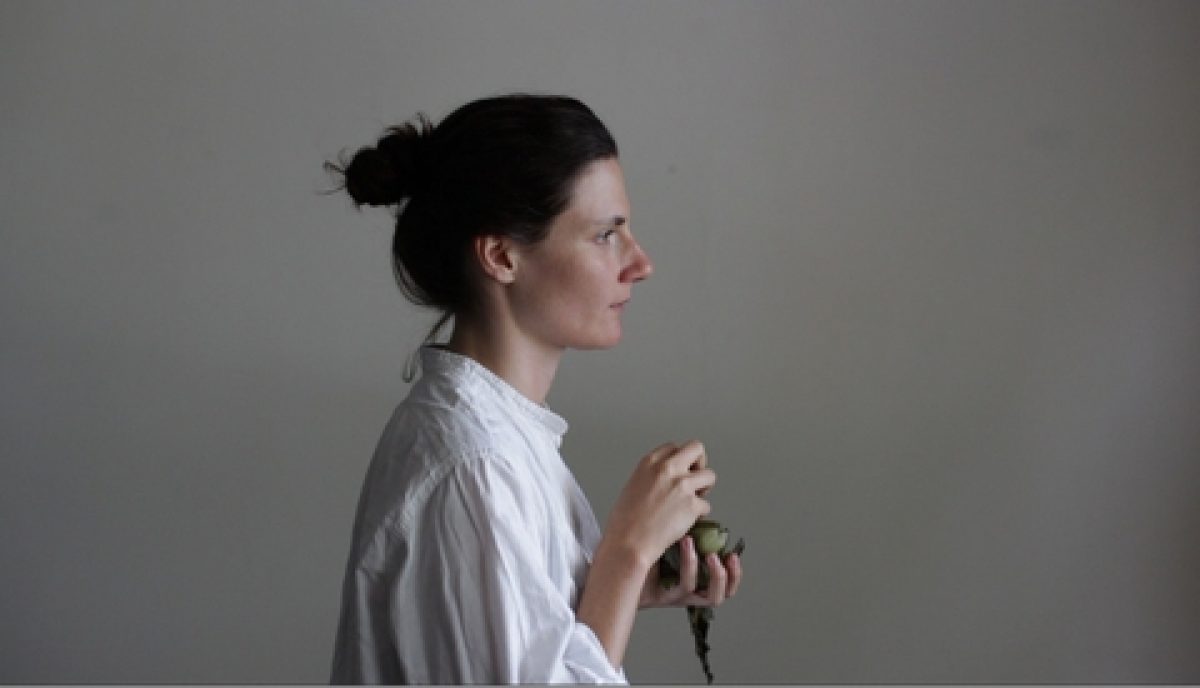
Lauren Brincat
Carciofo Arcimboldo, 2012
documentation of an action, 16:9, colour, silent
7 minutes 34 seconds
Edition of 3

Lauren Brincat
Dressing Down, 2012
documentation of an action, 16:9, colour, silent
5 minutes 28 seconds
Edition of 3
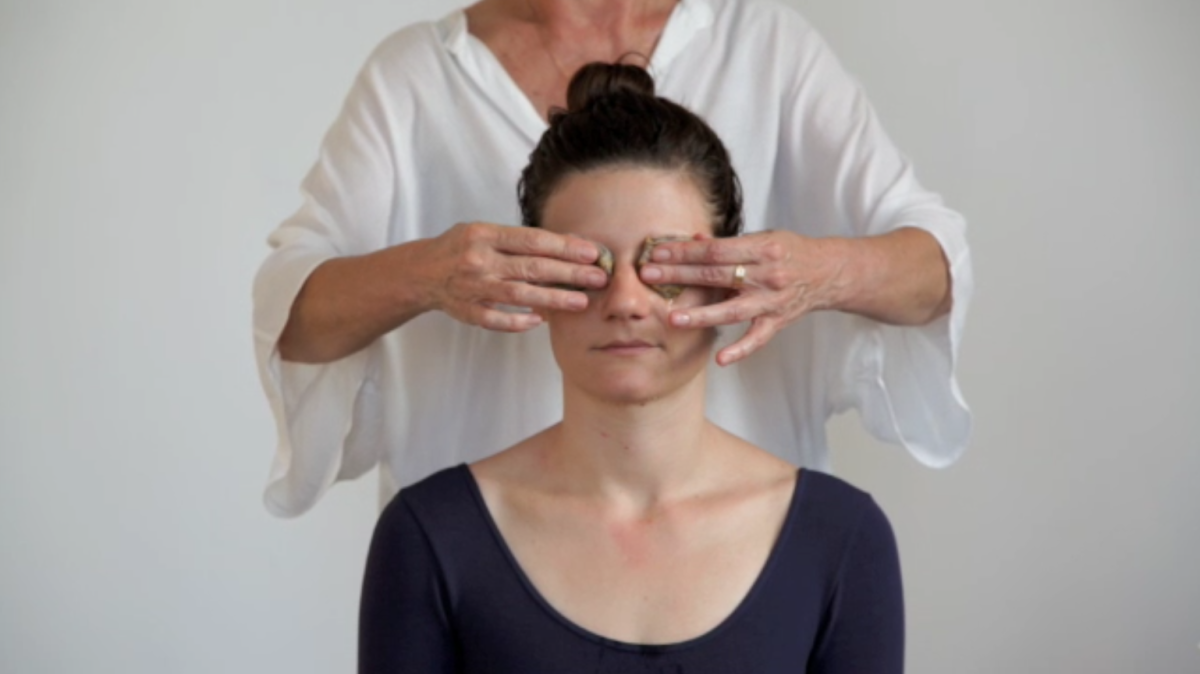
Lauren Brincat
Egyptian Camomile, 2012
documentation of an action, 16:9, colour, silent
8 minutes 6 seconds
Edition of 3
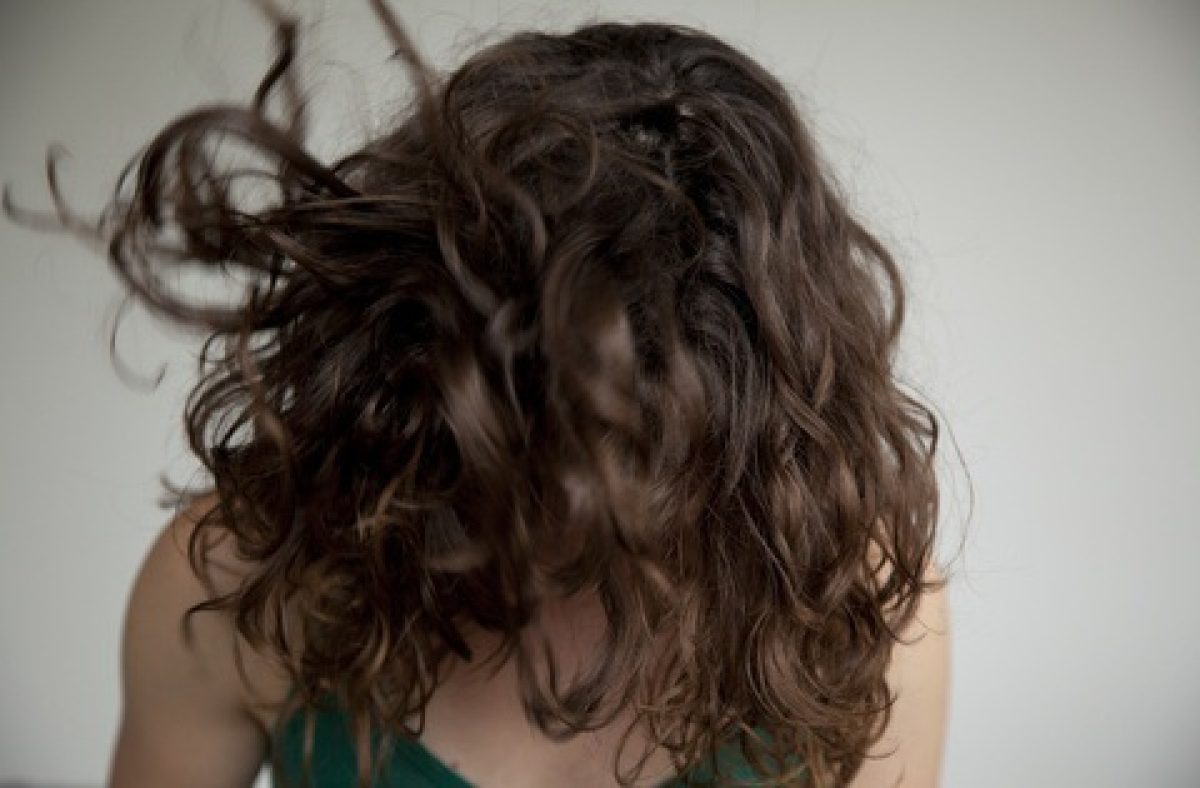
Lauren Brincat
Sway, 2012
documentation of an action, 16:9, colour, silent
3 minutes 21 seconds
Edition of 3

Lauren Brincat
Snare the Sea, 2012
documentation of an action, single channel High Definition video, 16:9, colour, sound
15 minutes 35 seconds
Edition of 3

Lauren Brincat
Golden Stranger, 2012
timber, vinyl paint
433 x 500 x 5 cm
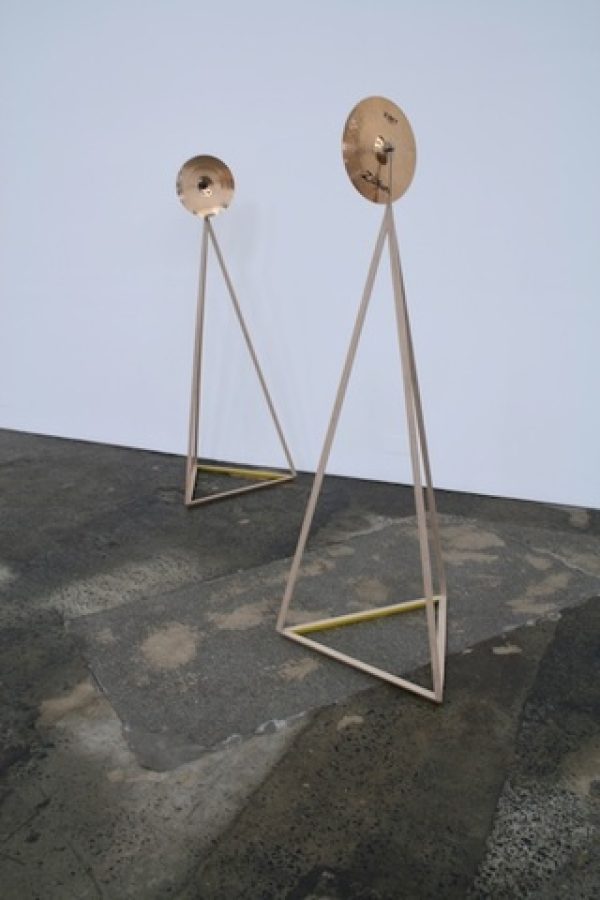
Lauren Brincat
Doldrums, 2012
timber, brass cymbals, vinyl paint, mirror
206 x 80 x 70 cm
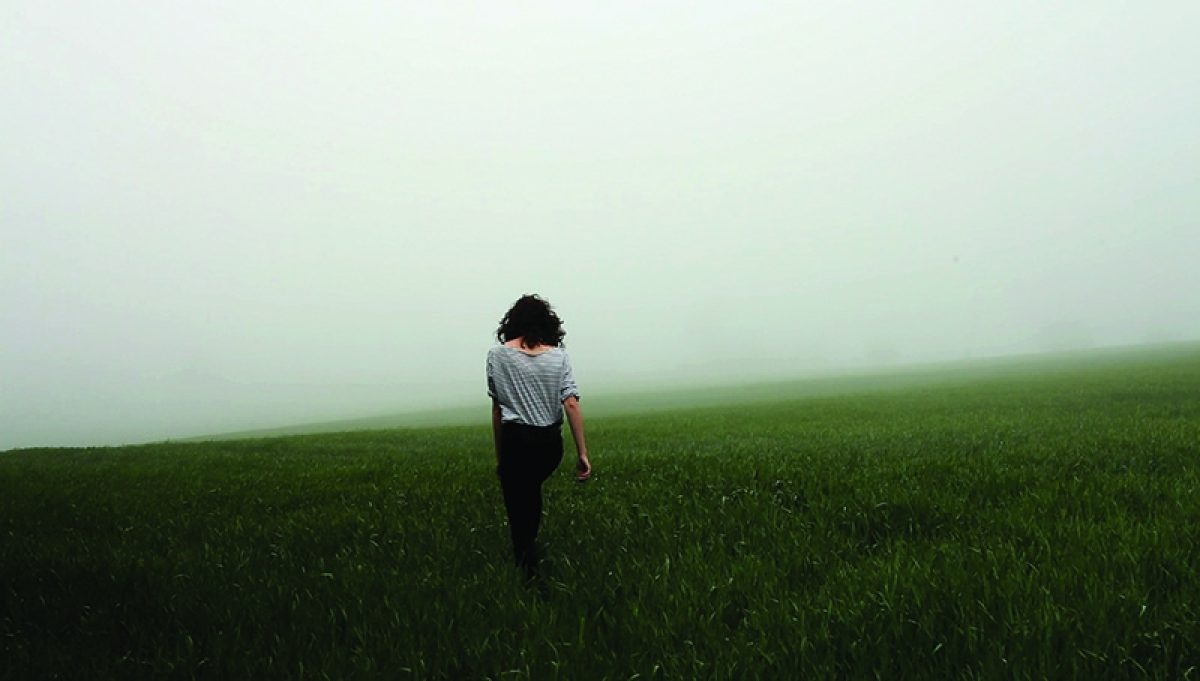
Lauren Brincat
Steady As She Goes, 2011
single-channel High Definition video, 16:9, colour, sound
2 minutes 40 seconds
Edition of 3






